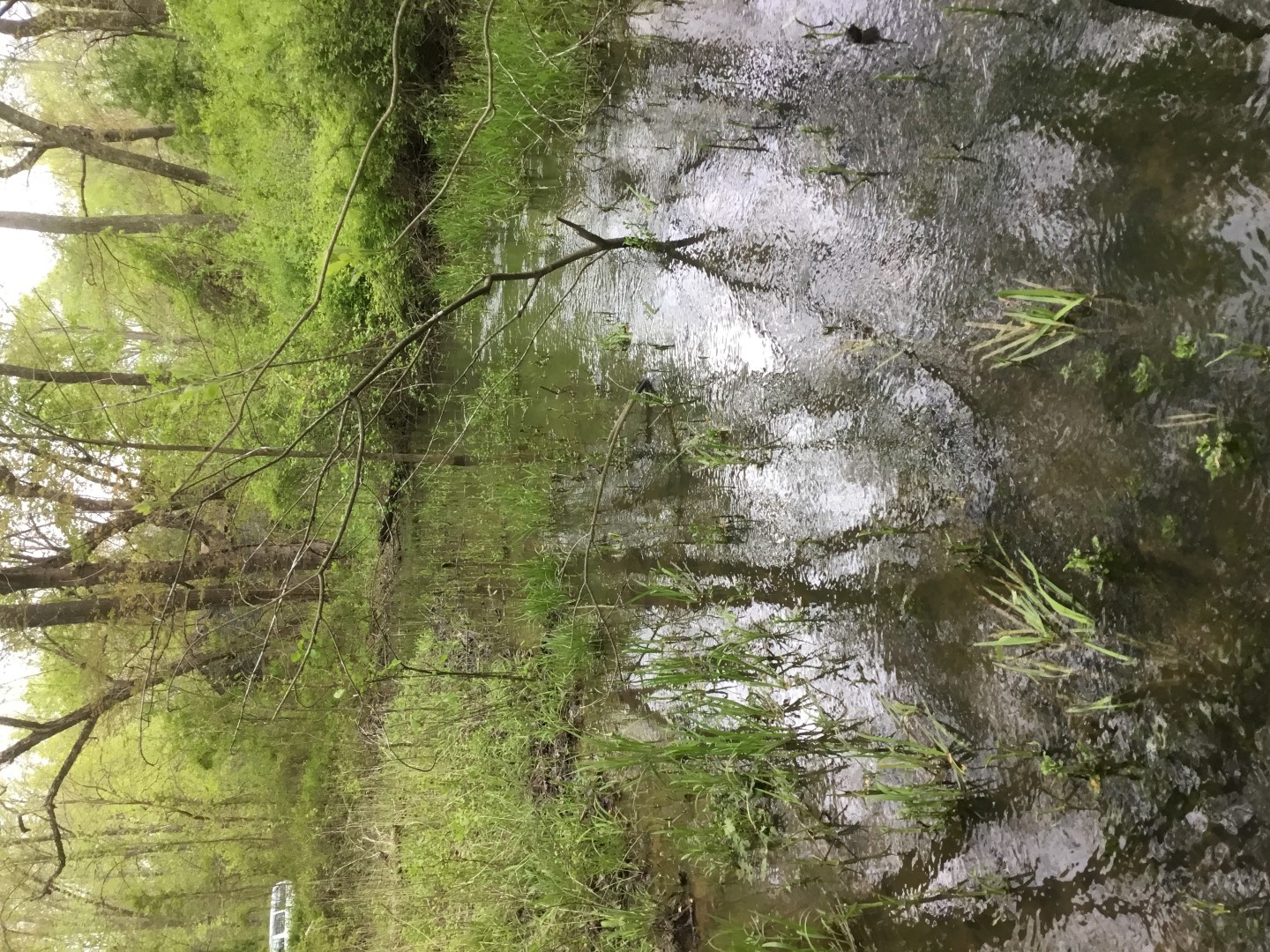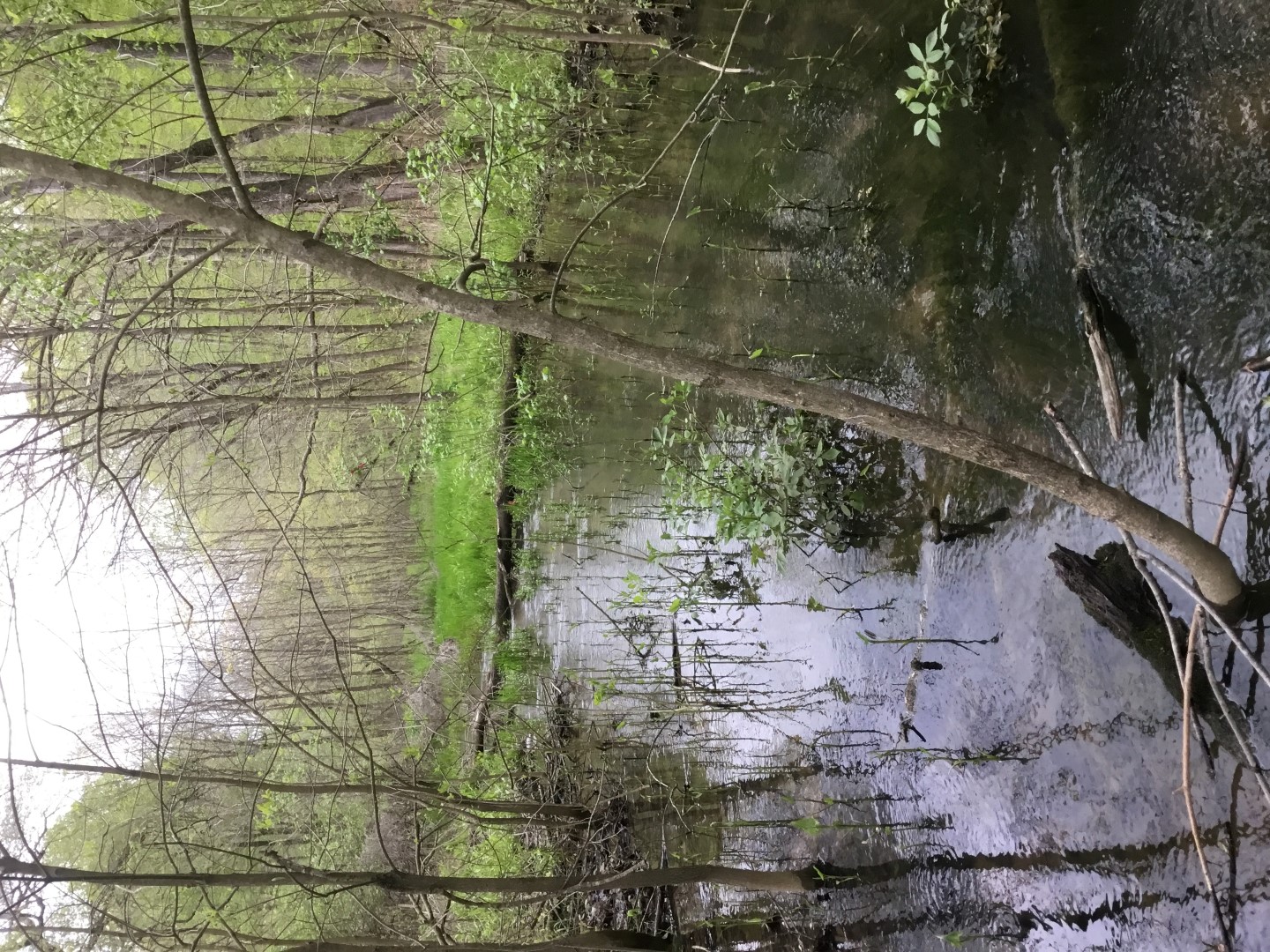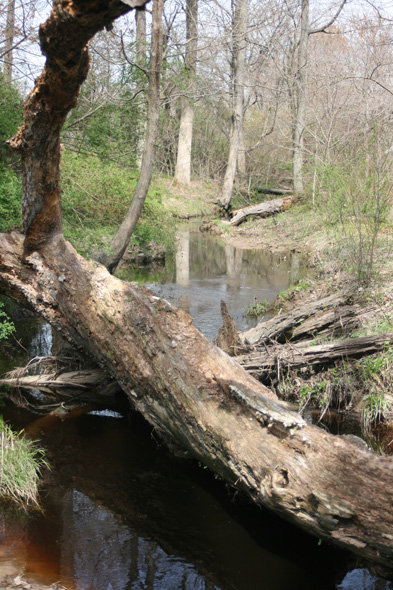MBSS Site details
MBSS Site Summary for: WEST-108-X-2020
Located on BLUEJAY BRANCH in the West River watershed,
8-digit code: 02131004.
This stream was visited in the spring on 4/27/2020.
|
An Index of Biotic Integrity (IBI) is a scientific tool used to identify and classify stream health. An IBI associates anthropogenic influences on a stream or with biological condition in the stream, and is formulated using data developed from biosurveys.
Details on the development and application of MBSS IBIs are in this document. |
| Fish IBI |
N R |
| Benthic IBI |
Poor - 1.9 / 5.0
|
Land Use:
Landuse can provide important information for determining streamhealth.
(Hint: hovering over the text will display definitions of land use variables.) |
| No landuse information available. |
| Stream Water Quality: |
| No water quality measurements taken in the field. |
Biological Stream Condition:
Surveys of the organisms living within a stream can give indications of stream health. Species richness, or the number of different species present, as well as indicator species (species whose presence, absence or abundance can serve as a measure of environmental conditions) are informative for stream health.
|
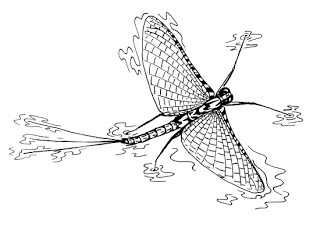 |
Fish Survey Results:
The following 1 fish species were collected at WEST-108-X-2020.
Sensitive taxa are indicated by green text, tolerant taxa are indicated by red text, and those with intermediate sensitivity are indicated by gold text. |
Common name |
Count |
| TOTAL |
43 |
|
Blacknose Dace
|
24 |
|
American Eel
|
18 |
|
Eastern Mudminnow
|
1 |

Electrofishing to sample fish communities. |
Amphibians and Reptiles:
The following were noted at this site: |
| Pickerel Frog |
Crayfish:
The following crayfish species were noted at this site: |
|
Exotic Plants:
The following exotic plants were noted at this site: |
|
|
Benthic Macroinvertebrates:
These are organisms like insects, snails, and bivalves, which inhabit the bottom substrates of streams for at least part of their life cycles. Good water quality is indicated by high taxonomic diversity, an abundance of taxa that are sensitive to disturbance, and a lack of taxa that are tolerant of disturbance. Sensitive taxa are indicated by green text, tolerant taxa are indicated by red text, and those with intermediate sensitivity are indicated by gold text.
|
| Genus/Family |
Common Name |
Count |
| CHAETOCLADIUS |
Non-Biting Midges
|
38 |
| POLYPEDILUM |
Non-Biting Midges
|
32 |
| TUBIFICIDAE |
Aquatic Worm
|
24 |
| MICROPSECTRA |
Non-Biting Midges
|
16 |
| STENOCHIRONOMUS |
European Non-Biting Midge
|
8 |
| LEUCTRIDAE |
Rolledwinged Stonefly
|
8 |
| THIENEMANNIELLA |
Non-Biting Midges
|
8 |
| PSEUDORTHOCLADIUS |
Non-Biting Midges
|
6 |
| TANYTARSUS |
Non-Biting Midges
|
6 |
| ORTHOCLADIUS |
Non-Biting Midges
|
6 |
| PARAMETRIOCNEMUS |
Non-Biting Midges
|
6 |
| PARATENDIPES |
European Non-Biting Midge
|
6 |
| CRYPTOCHIRONOMUS |
Non-Biting Midges
|
6 |
| CERATOPOGONIDAE |
Biting Midge
|
4 |
| SIMULIUM |
Black Fly
|
4 |
| HEXATOMA |
Crane Fly
|
4 |
| TIPULA |
Crane Fly
|
4 |
| SAETHERIA |
|
4 |
| ISOTOMURUS |
Elongate-Bodied Springtail
|
4 |
| POTTHASTIA |
Non-Biting Midges
|
4 |
| CORDULEGASTER |
Spiketail Dragonfly
|
2 |
| AMPHINEMURA |
Spring Stonefly
|
2 |
| THIENEMANNIMYIA GROUP |
Non-Biting Midges
|
2 |
| TRIBELOS |
Non-Biting Midges
|
2 |
| TRISSOPELOPIA |
Non-Biting Midges
|
2 |
| IRONOQUIA |
Northern Caddisfly
|
2 |
| LIMNEPHILIDAE |
Northern Casemaker Caddisfly
|
2 |
| AGABUS |
Predatory Aquatic Beetle
|
2 |
| ELMIDAE |
Riffle Beetle
|
2 |
| PRODIAMESA |
|
2 |
| NAIDIDAE |
Aquatic Worm
|
2 |
| CALOPTERYX |
Damselfly
|
2 |
| EMPIDIDAE |
Dance Fly
|
2 |
| APSECTROTANYPUS |
Non-Biting Midges
|
2 |
| CHIRONOMUS |
Non-Biting Midges
|
2 |
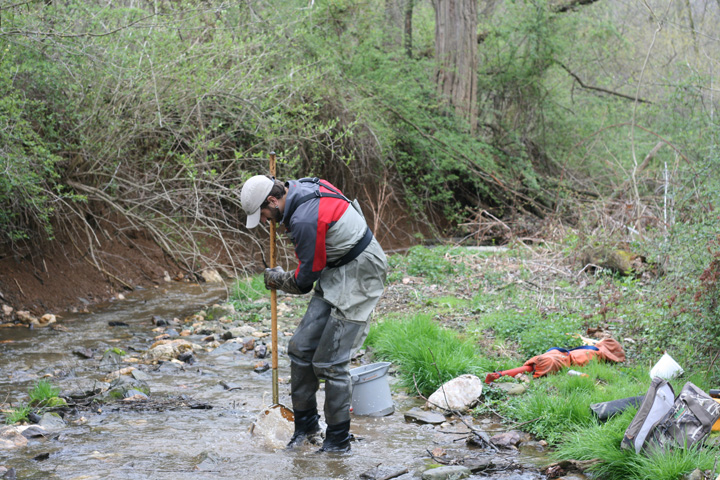
Sampling with a kick net for benthic macroinvertebrates. |
|
| Information disclaimer:
The information and data on this page is for guidance and general planning purposes only. It should not be used to make decisions on specific matters.
|
